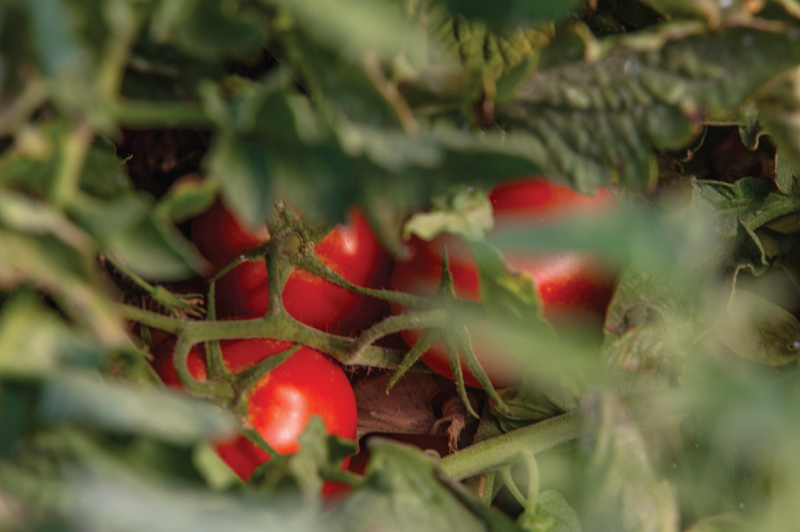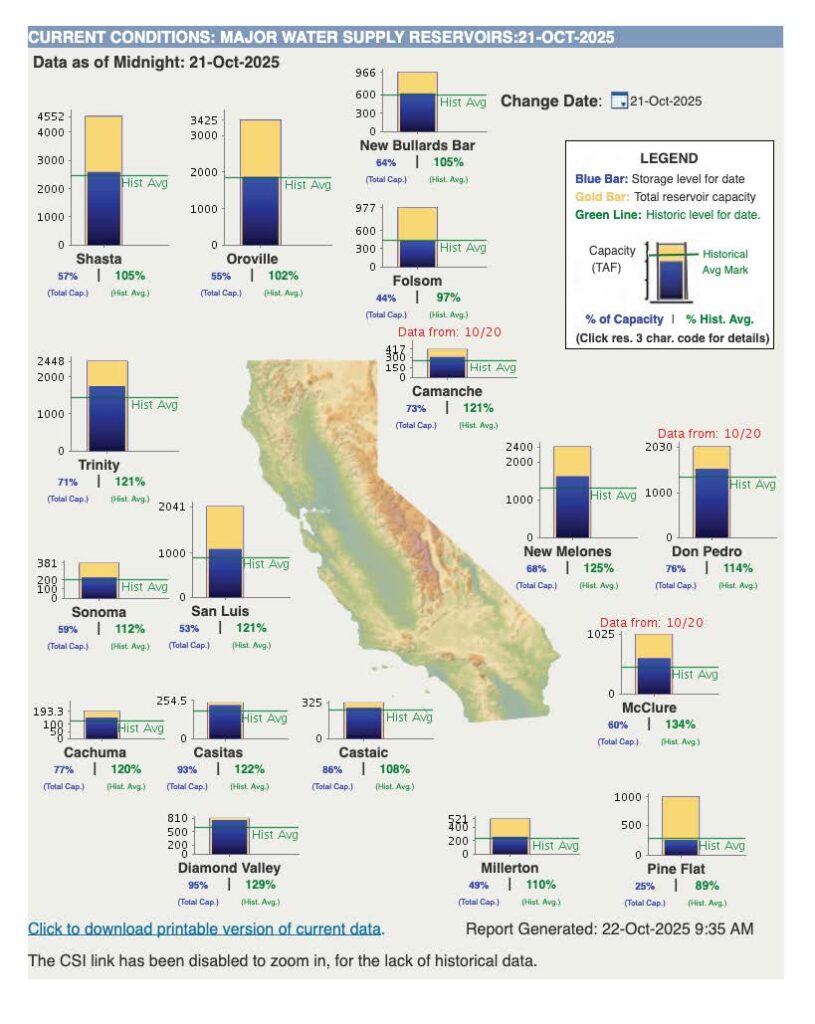California Agricultural & Water Outlook: 2026 Crop Year Preview
By: Erik Sunderbruch & Robby Force
As the 2025 crop year draws to a close, attention turns to 2026, and as always in California agriculture, all eyes are on water. According to the latest outlook from NOAA, La Niña conditions are now present and expected to persist through December 2025 to February 2026, with a likely transition to ENSO-neutral conditions between January and March 2026 (55% probability). La Niña events, driven by cooler than average sea surface temperatures in the central and eastern Pacific Ocean, often raise the risk of drier than normal conditions across much of California. While not every La Niña brings drought, the likelihood of below-average precipitation rises meaningfully.
Despite that risk, the 2025–2026 water year is off to a promising start. Early October rains brought measurable precipitation to key growing regions, though not without disruption to several late-season harvests, including processing tomatoes. After three consecutive winters of solid rainfall and snowpack, nearly all major California reservoirs remain above historical averages, providing a welcome buffer heading into the new year. However, reservoir levels alone do not guarantee ample surface-water allocations for growers next spring. Allocation decisions will hinge heavily on how the remainder of the winter unfolds. Morning Star continues to monitor California’s water outlook closely, including emerging legislative and regulatory developments that could impact key growing regions.
Economically, the California ag sector presents a mixed picture. Row-crop producers continue to face pressure from high input costs and soft commodity prices, while cattle and dairy operations are benefiting from firmer markets and improved margins. Permanent crops such as almonds have largely rebounded after several challenging years, whereas the wine-grape industry continues to struggle amid weak consumer demand. These dynamics are reshaping the state’s agricultural landscape as crop mixes evolve and marginal acreage exits production. 
The 2025 processing tomato crop will be remembered as one of the most productive in history. Favorable weather, strong stands, and efficient harvest conditions combined to deliver record-high yields statewide, more than ten percent above pre-harvest projections. In many areas, the pace of deliveries exceeded plant capacity, creating logistical challenges as processors worked to manage intake and maintain quality. Despite the heavy volume, fruit color and consistency were exceptional, underscoring the benefits of steady maturation and limited disease pressure during the critical ripening window.
Looking ahead to 2026, the tone is more cautious. Processor demand has softened, and after two consecutive acreage reductions, plantings are expected to decline again, marking a third straight year of contraction. Field pricing is also under downward pressure as inventories remain elevated. Even so, with a favorable water outlook and a record crop behind them, growers are entering the new season with measured optimism and a renewed focus on restoring balance to both supply and demand.
As California agriculture enters another pivotal year, its resilience continues to stand out. Balancing water uncertainty, market shifts, and evolving production economics will be key to sustaining growth. For processors, growers, and partners across the value chain, collaboration and strategic planning remain central to navigating 2026 and ensuring California’s position as a global leader in agricultural production and innovation.
###

Morning Star Newsletter now distributed electronically
As a reminder, Morning Star is now distributing our newsletters electronically using an email distribution vendor called Mailchimp. Your e-version will now include informative Morning Star videos and highlights. Depending on your company’s firewall, these emails may initially be directed to you spam folder.


